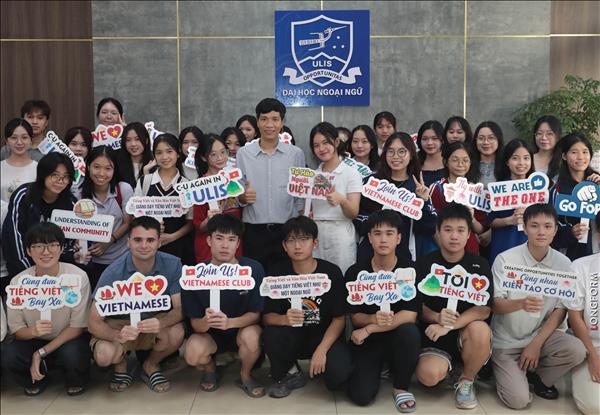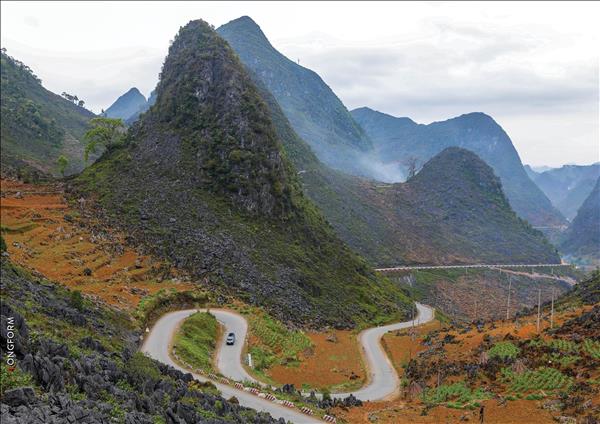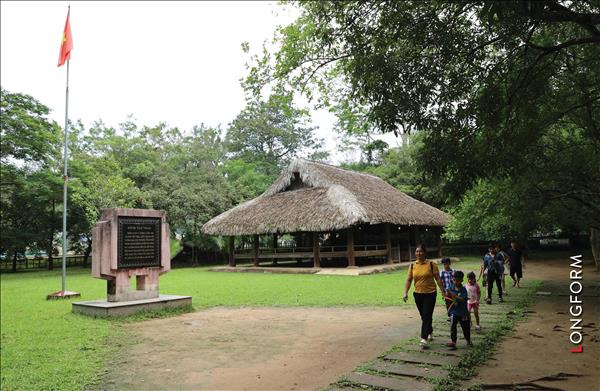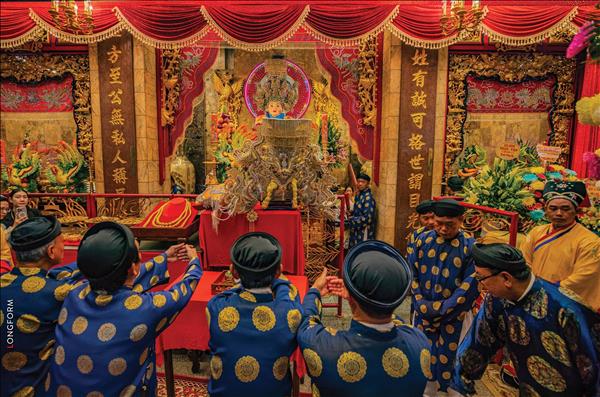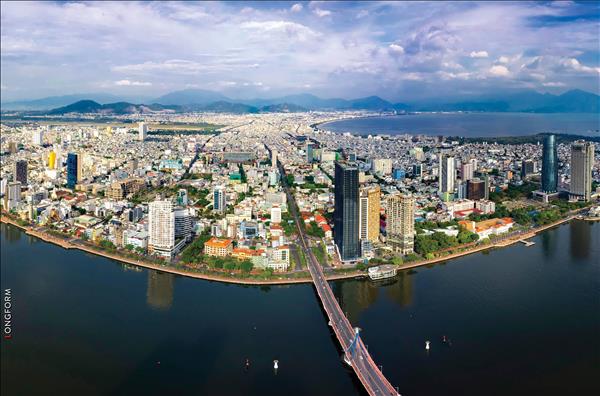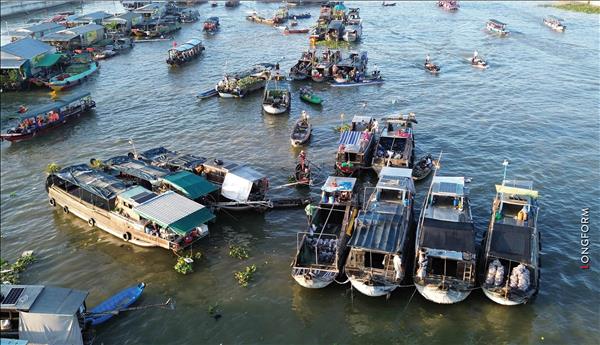In 1975, after the liberation of southern Vietnam, Saigon (Ho Chi Minh City), like many other urban centres throughout the country, started rebuilding the city.
By the 80s, when the country went into the period of “Doi moi” (Renovation), Ho Chi Minh City became the “promised land” for migrants from different parts of the country, who rushed to the city for jobs. This put pressure on the city regarding urban planning. Prompted by this reality, the Ho Chi Minh City administration started with the idea to make new plans for the city to meet the requirements of fast population growth while also ensuring the development objectives of civilisation and modernity. Phu My Hung urban Area was the beginning of this breakthrough idea. From a wild, wasted, marshy area to south of the city, this first urban centre was built and its value recognised when it received the honourable international award as an urban centre with the most outstanding general architecture in Asia selected in 1997 by the American Institute of Architects (AIA).
All daily life conveniences in this “model urban centre” have been given a perfect score. Speaking of the life here, Vu Minh Tuyet, 70, a resident of the Nam Thong 3 quarter of Phu My Hung urban Area, confided, “Previously, I lived in Hanoi and since I moved here, I have felt truly happy. Residents here live a civilised life. Thoroughfares are very spacious, the public parks are green year round, the climate is healthy, and everyone likes it”.
Phu My Hung is not only a place for its residents, but also for non-residents who come to visit and enjoy the spacious, civilised and modern space. On the occasion of New Year festivals, diverse cultural and artistic activities are organised for its residents and visitors. There are also spring flower fairs, an international children day festival and a mid-Autumn festival.
So far, Phu My Hung has nearly 30,000 inhabitants with foreigners accounting for about 43%. The presence of foreigners in the community has brought about a distinctive feature in the urban living space.
The success of Phu My Hung has spurred a change in the strategic urban planning thinking of Ho Chi Minh City authorities. A series of projects have emerged such as Thu Thiem New urban centre, Saigon river tunnel, Vo Van Kien avenue, Nguyen Van Linh avenue, Phu My bridge and Bitexco financial tower with a metro under construction.
Lying at the heart of district 1, the Bitexco 65-storey building with a distinctive shape of a lotus gives an overall view of the present dynamic and modern urban space by the side of the Saigon River.
There still exist in the downtown area of the city famous architectural works such as Notre Dame Cathedral Basilica of Saigon, the Central Post Office, Ben Thanh market and Reunification Palace. Roads lined with green trees of hundreds of years old, stand side by side with new high rises.
If Phu My Hung is considered a historical project in the initial period of the city’s development, the new urban centre of Thu Thiem is a key project of the city in the first years of the 21st century.
The former poor living quarter of Thu Thiem with thatched roof houses amidst periwinkle bushes has now become a modern urban centre of Thu Thiem linking it with the heart of the city by the Saigon river tunnel, the most modern one in Southeast Asia. In the future, this will be a high-class financial, trade and service centre of international magnitude, with designs for more than 300,000 people to live and work regularly. Thu Thiem urban centre is expected to be the most beautiful one in Southeast Asia with splendid water and land views.
By the 80s, when the country went into the period of “Doi moi” (Renovation), Ho Chi Minh City became the “promised land” for migrants from different parts of the country, who rushed to the city for jobs. This put pressure on the city regarding urban planning. Prompted by this reality, the Ho Chi Minh City administration started with the idea to make new plans for the city to meet the requirements of fast population growth while also ensuring the development objectives of civilisation and modernity. Phu My Hung urban Area was the beginning of this breakthrough idea. From a wild, wasted, marshy area to south of the city, this first urban centre was built and its value recognised when it received the honourable international award as an urban centre with the most outstanding general architecture in Asia selected in 1997 by the American Institute of Architects (AIA).
|
The upgrade of the transportation networks and projects like Thu Thiem new urban area, Vo Van Kiet and Nguyen Van Linh avenues has changed the appearance of the city. Photo: Thong Hai/VNP  Part of the master plan of Thu Thiem New Urban Complex, District 2, Ho Chi Minh City. Nguyen Van Linh avenue, a project that marked a breakthrough development of the city’s southern areas. Photo: Kim Phuong/VNP |
| Ho Chi Minh City is the largest city in Vietnam and the economic driving force of the whole country. Though accounting for only 10% of the national population and 0.6% of the total national area, Ho Chi Minh City has generated 23% of the GDP, 30% of the national budget revenue and attracted 20% of the FDI capital sources of the whole country. It is also a place where nearly 40% of the total number of science workers live. |
Phu My Hung is not only a place for its residents, but also for non-residents who come to visit and enjoy the spacious, civilised and modern space. On the occasion of New Year festivals, diverse cultural and artistic activities are organised for its residents and visitors. There are also spring flower fairs, an international children day festival and a mid-Autumn festival.
So far, Phu My Hung has nearly 30,000 inhabitants with foreigners accounting for about 43%. The presence of foreigners in the community has brought about a distinctive feature in the urban living space.
The success of Phu My Hung has spurred a change in the strategic urban planning thinking of Ho Chi Minh City authorities. A series of projects have emerged such as Thu Thiem New urban centre, Saigon river tunnel, Vo Van Kien avenue, Nguyen Van Linh avenue, Phu My bridge and Bitexco financial tower with a metro under construction.
|
Built by the Vietnamese-Taiwanese joint-venture Phu My Hung Corporation in 1997, Phu My Hung is a showcase of a modern urban neighbourhood in Vietnam, turning wetlands into a multifunctional urban area. Photo: Kim Phuong/VNP Luxury villas in Phu My Hung urban area in District 7, Ho Chi Minh City. Photo: Kim Phuong/VNP The development of new urban areas like Phu My Hung creates modern and comfortable living spaces for the city’s residents. Photo: Kim Phuong/VNP Located in District 8, the Harbour City complex was built by Real estate developer Novaland. Photo: Kim Phuong/VNP Sala Thu Thiem is a resident area of 130ha, a part of the Thu Thiem new urban area, district 2, Ho Chi Minh City (657ha). Photo: Kim Phuong/VNP Many modern apartments attract local residents. Photo: Kim Phuong/VNP New resident areas with comfortable facilities meet the demand of residents. Photo: Kim Phuong/VNP |
Lying at the heart of district 1, the Bitexco 65-storey building with a distinctive shape of a lotus gives an overall view of the present dynamic and modern urban space by the side of the Saigon River.
There still exist in the downtown area of the city famous architectural works such as Notre Dame Cathedral Basilica of Saigon, the Central Post Office, Ben Thanh market and Reunification Palace. Roads lined with green trees of hundreds of years old, stand side by side with new high rises.
If Phu My Hung is considered a historical project in the initial period of the city’s development, the new urban centre of Thu Thiem is a key project of the city in the first years of the 21st century.
| Currently, Ho Chi Minh City has 11 projects on urban centres of 200ha or more and 44 projects of living areas under 200ha, with a total land area of about 23,370ha. |
The former poor living quarter of Thu Thiem with thatched roof houses amidst periwinkle bushes has now become a modern urban centre of Thu Thiem linking it with the heart of the city by the Saigon river tunnel, the most modern one in Southeast Asia. In the future, this will be a high-class financial, trade and service centre of international magnitude, with designs for more than 300,000 people to live and work regularly. Thu Thiem urban centre is expected to be the most beautiful one in Southeast Asia with splendid water and land views.
|
The headquarters of Ho Chi Minh City People’s Committee was built in 1898 and was put into use in 1909. The building is among the preserved sites in the city’s master plan. Photo: Thong Hai/VNP 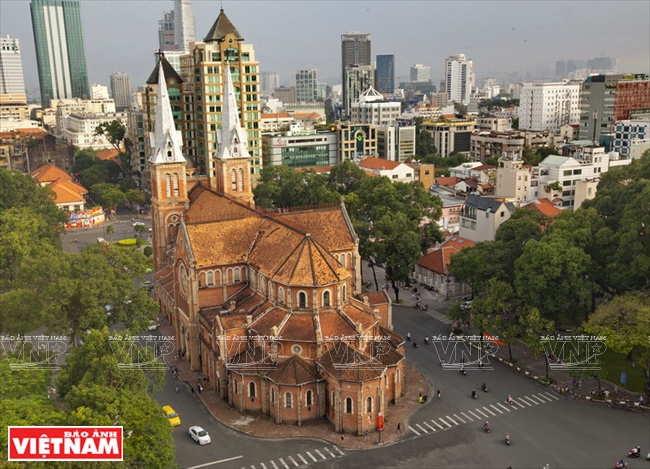 Notre-Dame Cathedral Basilica of Saigon (Nha tho Duc Ba), begun in 1877 and completed in 1880, is one of the most popular tourist attractions in Ho Chi Minh City. Photo: Kim Phuong/VNP  Saigon Central Post Office is famous for its unique architecture in Ho Chi Minh City. The building was constructed when Vietnam was part of French Indochina in the late 19th century. Photo: Nguyen Luan/VNP Besides developing new urban areas, city authorities pay much attention to preserving historic and cultural architectural works. In the photo: Vintage villa No. 110-112 in Vo Van Tan, Ho Chi Minh City. Photo: Thong Hai/VNP  The Saigon River Tunnel is one of the most modern underwater tunnels in Southeast Asia which opened on November 20, 2011. Running underneath the Saigon River in Ho Chi Minh City, the tunnel connects the existing urban centre of Ho Chi Minh City with Thu Thiem New Urban Area in District 2. Photo: Thu Ba/VNP 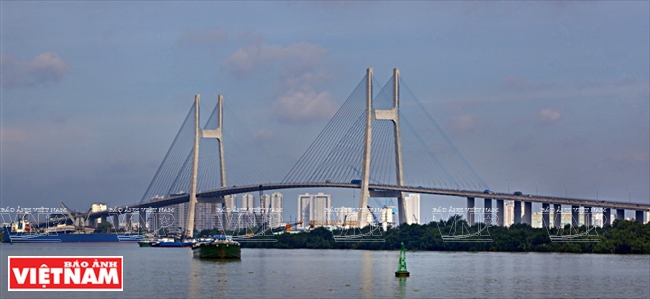 Phu My bridge connects District 2 and District 7. Photo: Kim Phuong/VNP The synchronised transportation system connects District 1 and District 4. Photo: Kim Phuong/VNP Bitexco Financial Tower is a 68-story skyscraper in Ho Chi Minh City which was built in the shape of a lotus. Photo: Kim Phuong/VNP More shopping centres have been built in Ho Chi Minh City.Photo: Kim Phuong/VNP The pedestrian street of Nguyen Hue in downtown Ho Chi Minh City, the city’s first of its kind, was opened in 2015. Photo: Thong Hai/VNP 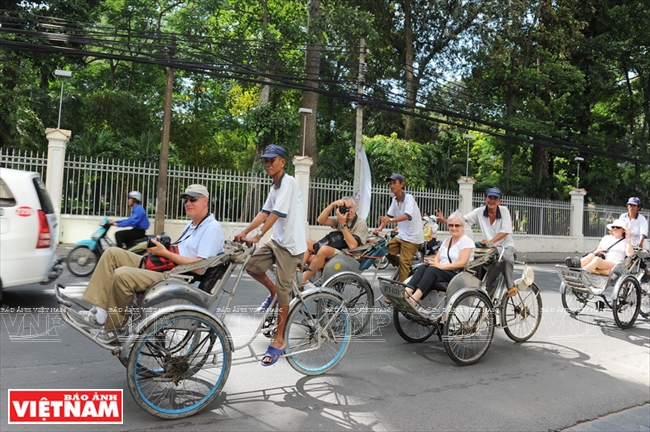 Ho Chi Minh City annually attracts a large number of foreign tourists. Photo: Kim Phuong/VNP |
With their urban development planning strategy, Ho Chi Minh City administration has, for many years now, concentrated resources to ensure a peaceful and healthy living environment and social welfare for city dwellers. It has always encouraged various economic sectors and enterprises of different types to strongly develop production and business with a view to creating more jobs for people, increasing their income and reducing poverty. They have raised the quality of the insurance system and combined economic development with environmental protection towards the objective: “Ho Chi Minh City is characterised by a life of good quality, civilisation, modernity and emotional ties among people”. It is worthy of its title “Pearl of the Far East”.
|
According to a World Bank report, if the population grows at an annual average rate of 3,9% as in the 2000- 2010 period, Ho Chi Minh city’s population is expected to reach over 10 million people by 2020, excluding immigrants. Therefore, Ho Chi Minh City strives to reach an average per-head housing space of 20m2 by 2020 and 22.4m2 by 2025. |
Story: Nguyen Vu Thanh Dat - Photos: Dang Kim Phuong, Thong Hai & Thu Ba

